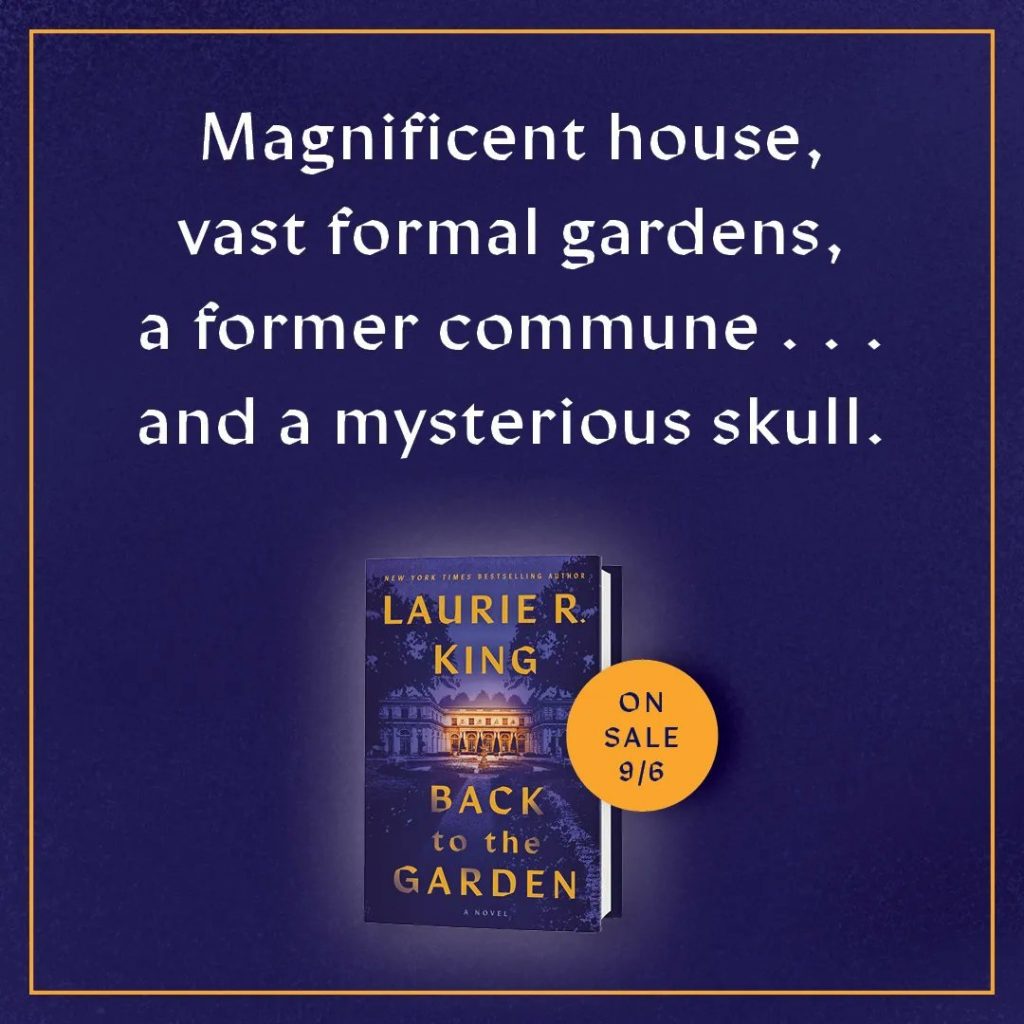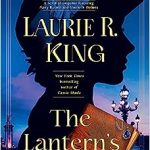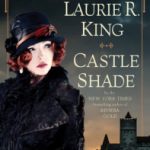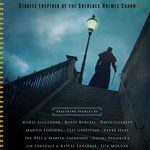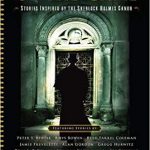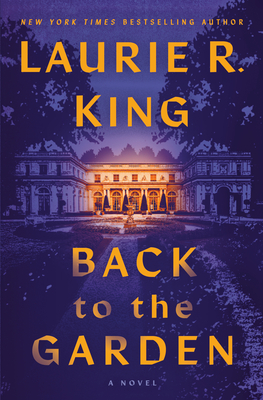 Back to the Garden by Laurie R. King
Back to the Garden by Laurie R. King Format: eARC
Source: supplied by publisher via Edelweiss
Formats available: hardcover, ebook, audiobook
Genres: historical fiction, historical mystery, mystery, thriller
Pages: 336
Published by Bantam on September 6, 2022
Purchasing Info: Author's Website, Publisher's Website, Amazon, Barnes & Noble, Kobo, Bookshop.org, Better World Books
Goodreads
A fifty-year-old cold case involving California royalty comes back to life--with potentially fatal consequences--in this gripping standalone novel from the New York Times bestselling author of the Mary Russell and Sherlock Holmes series.
A magnificent house, vast formal gardens, a golden family that shaped California, and a colorful past filled with now-famous artists: the Gardener Estate was a twentieth-century Eden.
And now, just as the Estate is preparing to move into a new future, restoration work on some of its art digs up a grim relic of the home's past: a human skull, hidden away for decades.
Inspector Raquel Laing has her work cut out for her. Fifty years ago, the Estate's young heir, Rob Gardener, turned his palatial home into a counterculture commune of peace, love, and equality. But that was also a time when serial killers preyed on innocents--monsters like The Highwayman, whose case has just surged back into the public eye.
Could the skull belong to one of his victims?
To Raquel--a woman who knows all about colorful pasts--the bones clearly seem linked to The Highwayman. But as she dives into the Estate's archives to look for signs of his presence, what she unearths begins to take on a dark reality all of its own.
Everything she finds keeps bringing her back to Rob Gardener himself. While he might be a gray-haired recluse now, back then he was a troubled young Vietnam vet whose girlfriend vanished after a midsummer festival at the Estate.
But a lot of people seem to have disappeared from the Gardener Estate that summer when the commune mysteriously fell apart: a young woman, her child, and Rob's brother, Fort.
The pressure is on, and Raquel needs to solve this case--before The Highwayman slips away, or another Gardener vanishes.
My Review:
“We are stardust, we are golden” begins the chorus of Joni Mitchell’s song, Woodstock, from which the title of this book is taken. If you’ve been hearing the words in your head, as I have, the earworm is probably from the Crosby, Stills, Nash and Young cover of the song, which has become a Classic Rock staple in the intervening, OMG 52(!) years.
At the time, the 70s did seem golden, but as SFPD Inspector Raquel Laing is forced to look back at the summer of 1979 – before she was even born – what she sees is a whole lot of naivete through a haze of pot smoke. By 1979 the counterculture movement was already in the rearview mirror.
But during that summer of 1979, so long ago and in many ways so far away, someone placed a dead body in a hole that was about to be filled with concrete, and there it has sat for over 40 years.
Waiting to be uncovered.
The Gardener Estate was once one of the palaces of California’s rich and famous. Then it was turned into an almost equally famous commune by a disaffected heir. So many years later, it’s a tourist attraction, known for its eclectic history, its beautiful gardens, and its collection of feminist artworks by a once-and-future famous artist.
It’s one of those artworks, a statue built from found objects showing the three faces of Eve, that has been hiding the grave. As the statue starts toppling, conservators rush in to save it – and to prevent it from falling on any of those tourists who keep the place afloat.
And that’s where Inspector Laing comes in. She’s working on a cold case that has just become much too hot for several police departments in Northern California. A serial killer operating in the 1970s, who was not only never caught but was never even recognized as anything more than an urban legend.
But “The Highwayman” as Michael Johnson was called was more than real enough for cancer to have caught up with him, and for his need for care to have uncovered his secrets. Now he’s dying, time is running out fast, and Laing has a burning need to get the details of all his victims so that closure can be provided to the families who have been waiting for so many long years.
The body under the Eves might be one of the Highwayman’s victims. It might help close this biggest of cold cases. But it might just open Pandora’s box on a brand new fresh one. It’s up to Laing to find out which. Before the clock runs out. Or before new bodies start piling up.
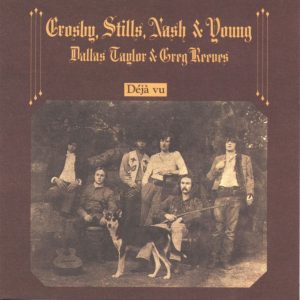 Escape Rating B+: I pickled this because I adore the author’s Mary Russell and Sherlock Holmes series. While I certainly knew going in that this book was not a continuation of any of her other series I also knew that I’d get a taut and compelling mystery under the investigative eye of a complex but hyper-competent detective that would weave its way around a fascinating cast of characters.
Escape Rating B+: I pickled this because I adore the author’s Mary Russell and Sherlock Holmes series. While I certainly knew going in that this book was not a continuation of any of her other series I also knew that I’d get a taut and compelling mystery under the investigative eye of a complex but hyper-competent detective that would weave its way around a fascinating cast of characters.
And so it certainly proved. I’ll also confess that the earworm drove me absolutely bananas for the longest time, as the recognizable line from the song that forms the title of the book is obviously not the song’s title. Without a bit of google-fu I’d have gone completely batty by now.
The story is told in two timelines. The 1970s past and the 2020s present. I was in high school, college and graduate school in the 1970s, so old enough to remember but not quite old enough – or at least not brave enough – to be part of the counterculture movement. Still, the 1970s part of this mystery rings very true.
In the here and now, Laing’s career is hanging by a thread. She’s on probation, working the cold case files with her mentor, while the powers-that-be decide what to do with her and her tendency to bullheadedly follow a case out past the bounds of not just propriety but even straight out into questions of illegality.
Her sister has fingers in some very murky corners of questionably sourced information on the dark web. Using her sister to get information relevant to her cases is a good way to get the case tainted beyond the ability to prosecute. But sometimes she can’t resist because there are crimes that are just so dirty that the ends do seem to justify those means.
Laing is afraid that the Highwayman’s buried victims may be one of those cases, and much of Laing’s part of this investigation is wrapped in her questioning of herself about just how far she should go.
But what makes this story so compelling are the questions about the past. She may not know who was buried under that statue but she does know when it happened. The Eves were raised at the end of the summer of 1979, after a commercially successful folk-rock festival that literally tore the community apart. Thousands visited the community that one event-filled day. In the aftermath, several members of the community left.
As she interviews the remaining community members, a picture begins to emerge of those final, fraught, frantic days. A picture that brings 1979 back to life in all of its rainbow-tinted, drug-hazed glory. And tragedy.
While I came to this for the mystery investigation, what kept me turning pages was the nostalgic recreation of an era that was already gone even at the time it happened. (If this part of the story appeals to you as well, take a look at Lady Sunshine by Amy Mason Doan.) The reader is right there with them, seeing the dream, knowing just how soon it’s going to die. It’s not a surprise that the commune failed. It’s a surprise that it lasted as long as it did. It’s also telling that a big chunk of the reason it lasted was the money that came from the Estate. That they all thought the Estate was a tainted capitalist enterprise that they shouldn’t be benefiting from showed how shaky the foundation really was.
And yet it is clear from the survivor’s recollections that the brief period was the high point of their lives, and that they look back with teary-eyed nostalgia.
But the hand pulling back that curtain of nostalgia isn’t as clear as those memories. Laing is interesting, but it doesn’t feel like we got enough of her to really know her. In contrast, one of the things that makes Mary Russell so compelling is that her character is sharp and distinct from the very first page of her very first adventure in The Beekeeper’s Apprentice.
Laing is a very insular character, as is Holmes. But she doesn’t have enough of a foil, at least not yet, to allow us to see her in fullness through another’s eyes. So far, at least, she reads more as a vehicle than a character. Howsomever, the way that Back to the Garden ends does leave the door wide open for a sequel. If this turns out to be the start of a series, we’ll get to see where Laing’s penchant for obsessing over her cases leads to next.
One final note, as this story’s title teased me with its call back to Joni Mitchell’s song, the story itself evoked pieces of other books as well. I mention Lady Sunshine by Amy Mason Doan as both books have that same sense of looking back at the 1970s through golden-tinted lenses of nostalgia. The state of the Gardener Estate, its checkered history and the perilous state of its finances along with the mystery surrounding its past reminded me of Museum of Forgotten Memories by Anstey Harris. And Laing’s career as a serial killer profiler made me think of the Quinn & Costa series by Allison Brennan.
Depending on which parts of Back to the Garden have the most appeal to you, you should hopefully find something else fascinating to tide you over until the book comes out next week!
